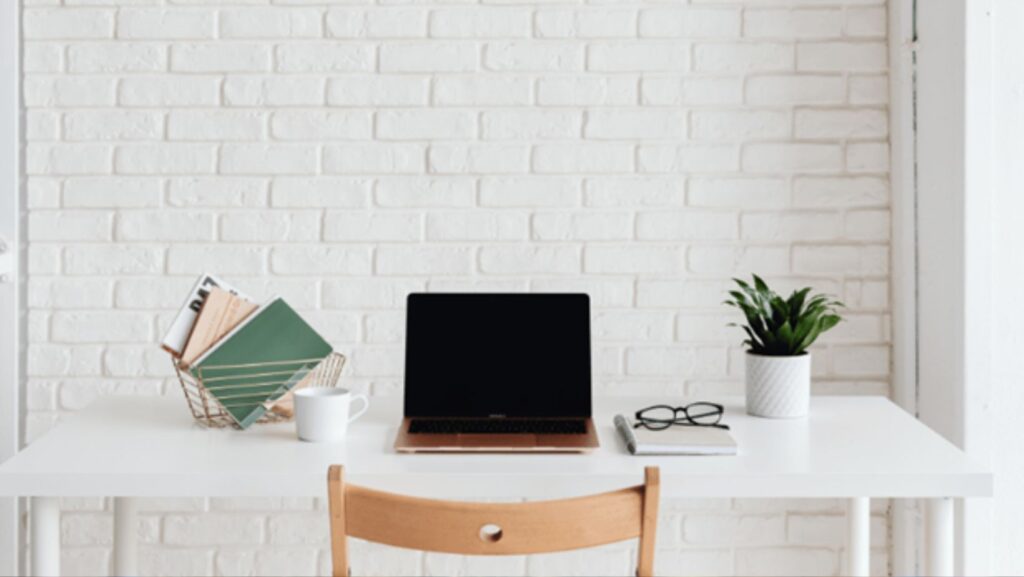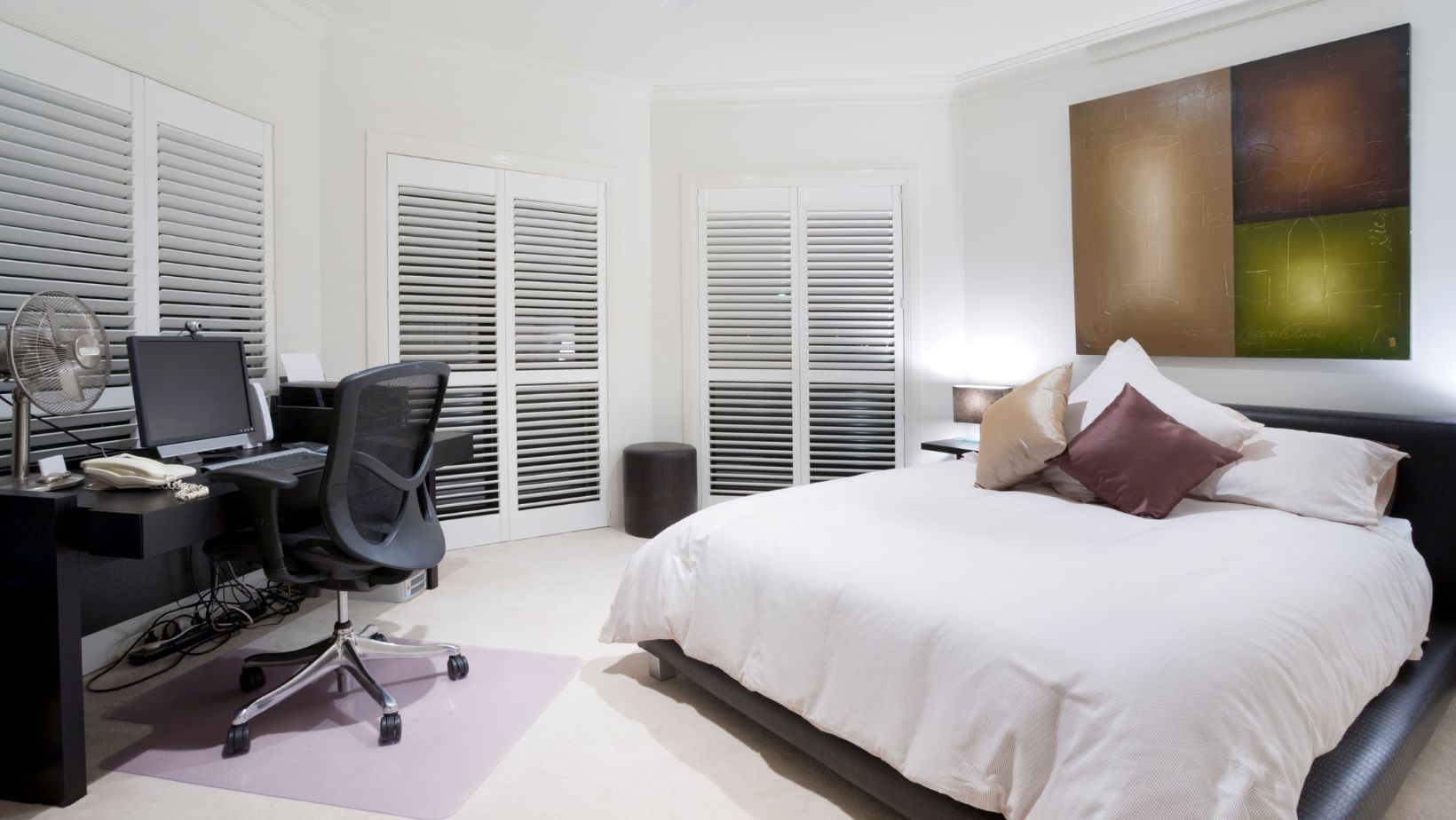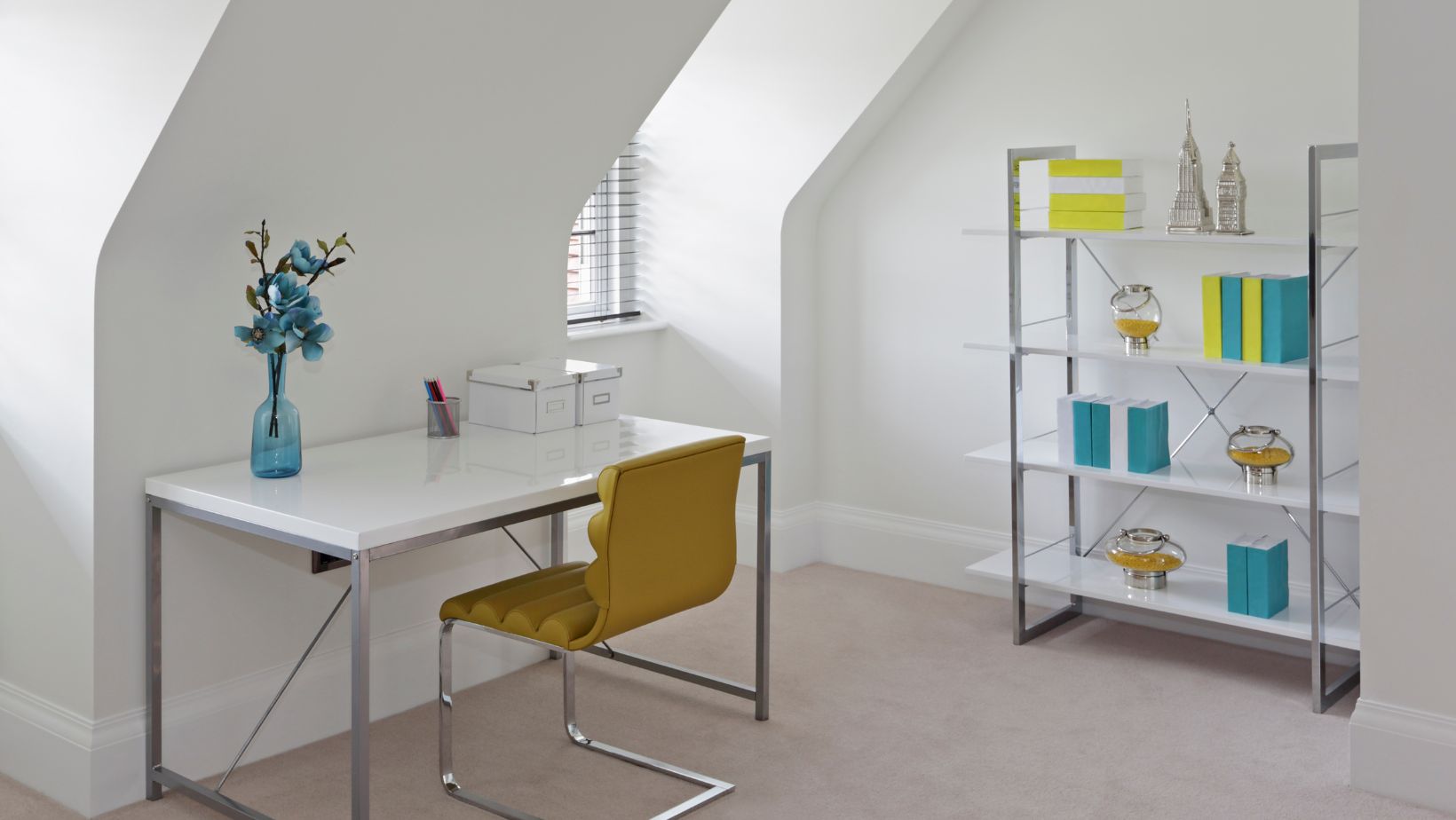
The way we work has transformed hugely in the last five years, with more people working remotely, choosing to go freelance, or even embracing hybrid working, where they only work a few days in the office. Workers are saying goodbye to the awful commutes and costly travel expenses of office life, instead living life on their own terms.
However, remote working isn’t always easy, especially when your space is limited. Many remote workers might even miss the productivity and focus that office spaces offer. However, there are a few things you can do to turn your home into a productive space – without sacrificing your personal sanctuary.
We’ll walk you through ways to create a comfortable, organized, and stylish office space within your bedroom. Whether you’re working with a small corner of your room or a tight squeeze, we’ve got you covered.
Your Home Office Space Matters
Okay, we get it. You may be tempted to work from the cozy cocoon of your bed. But the simple fact of the matter is your work environment has a direct impact on your productivity and even your mental health.
A thoughtfully designed workspace will help you focus, reduce pesky distractions, and create those all-important boundaries between work and relaxation. This is crucial for your mental health when you’re working where you sleep.
The Challenges of a Bedroom Office
While the bedroom might not be your first choice for an office, many remote workers have no other option. Here are some of the challenges you might be dealing with.
- Not a Lot of Space: Bedrooms are often already small, leaving little room for extra furniture or work equipment.
- Clutter: Adding a workspace can quickly make the room feel crowded and messy, which isn’t great for sleeping.
- Blurred Boundaries: Without a proper workspace, it’s easy to let productivity and your personal life bleed into one another.

It sounds bleak. However, with the right strategies, you can create a space that works for you.
Expand Your Options
Sometimes, no matter how hard you try, you just need more space. If your current bedroom doesn’t give you the ideal office setup, even after following the tips below, consider upgrading your living situation. Platforms like SpareRoom offer shared housing options that can provide more space and flexibility for remote workers.
SpareRoom is a fantastic resource for finding affordable rooms to rent, particularly in popular areas like Dallas. You may gain access to larger bedrooms or shared living spaces that make it easier to carve out a small office space.
Creating the Perfect Bedroom Office Space
1. Find the Right Spot
The first step in creating an effective bedroom office is identifying the best possible location for your desk. Look for areas that offer:
- Natural Light: Place your desk near a window to reduce eye strain and boost your mood.
- Less Distraction: Choose a corner or wall away from your bed to mentally separate work and rest.
- A Good Use of Space: A nook, alcove, or even the area beneath a loft bed can double as an office.
2. Prioritize Comfort
Comfort is key when you’re spending hours at a desk. Improper posture can lead to back pain, wrist strain, and fatigue. In a small space, achieving proper comfort needs some creativity.
- Choose the Right Chair: Go for a compact, ergonomic chair. If space is tight, use a dining chair with a back-support cushion for a dining chair.
- Monitor Positioning: Adjust your laptop or monitor to eye level using a riser or stack of books to prevent neck strain.
- Think About Foot Placement: Use a footrest or a small box to keep your feet flat on the ground, as this will improve circulation.
3. Get Smart with Storage
Clutter is the enemy of productivity, but it can be inevitable in small spaces. However, you can still keep your bedroom office organized with the following ideas.
- Vertical Storage: Install shelves or pegboards above your desk to store office supplies or books.
- Under-Bed Storage: Use bins or rolling drawers to stow away items like documents or equipment.
- Hidden Storage: Look for desks with built-in compartments or organizers to keep everything tidy and out of sight.
We also recommend regularly assessing what you truly need in your workspace. This will keep your bedroom feeling calm and uncluttered.
Another great way to save space while adding a modern touch is to install floating shelves. These shelves provide functional storage without the bulk of traditional furniture, making them ideal for displaying decor, storing books, or keeping essential items within reach.
4. Create Boundaries
Blurring the lines between work and relaxation can make it harder to switch off at the end of the day. Here’s how to separate your bedroom office from your personal space.
- Use Dividers: A folding screen, curtain, or bookshelf can section off your workspace.
- Define Work Hours: Stick to a schedule and put away work items at the end of the day.
- Decorate with Intention: Keep your workspace distinct from the rest of the room. For example, use a different color palette or decor style to differentiate the two areas.
5. Make It Yours
A personalized workspace that feels like you will inspire creativity and focus. Add touches that reflect your personality. But don’t go overboard! You need to make sure your desk stays functional.

- Lighting: Use a desk lamp with adjustable brightness to reduce glare.
- Greenery: Small plants like succulents or pothos bring life to your bedroom office and improve air quality.
- Decorations: Choose art, photos, or motivational quotes that uplift your mood without creating visual clutter. Versatile wallpaper borders are another great way to define your workspace while adding subtle visual interest. They’re easy to apply and remove, making them perfect for renters or shared spaces.
Overcoming Small-Space Challenges
Even the tiniest bedroom can make for a productive office space with a little creativity. Let’s address some common concerns:
- There’s Not Enough Room for a Desk – We Hear You! Look for wall-mounted drop-leaf tables or compact desks that can be tucked into a corner.
- Your Room is Already Too Dark – Use mirrors to reflect light and invest in bright, neutral-colored decor to open up the space.
- You Can’t Concentrate With Your Bed in View – We get it; if you see your bed, you might want to crawl back into it. A room divider or even a strategically placed bookshelf can block the view of your bed, creating a separate work zone.
Final Thoughts
Creating an office space inside your bedroom can be a challenging task, but it doesn’t have to be impossible. It requires thoughtful planning, but the payoff is well worth it. By combining ergonomic furniture, smart storage, and personalized touches, you can create a workspace that will improve your productivity and fit easily into your life.











